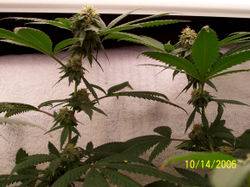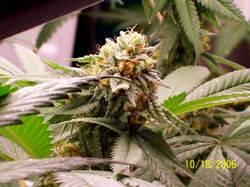N
Nostromo
While reading a long thread I noticed that someone stated that, if metal halides were used for vegging and fruiting, the yield would be a little less, but that the buds would be more sugary, potent, and would result in a better high. After that, I made a couple of searches in this forum and found several comments along the same line. I will be starting my first grow (3 Hashberries, 3 Sadhus, 3 Satoris and 3 Tribal Visions, on a 4 x 4 Hydrohut, on soil) in a couple of weeks and I intended to go for the orthodoxy and use a 400w mh (enhanced red spectrum) for vegging and a 400w HPS Hortilux eye for fruiting, but these posts got me into thinking. Given the fact that I don´t care about big yields, since I grow for myself (an ounce a month or so) and I do care about the potency and quality of the high, do you think it would be better to use the MH for the whole process? 




 Hi All! There might be some truth to the MH vs HPS in flowering
Hi All! There might be some truth to the MH vs HPS in flowering


